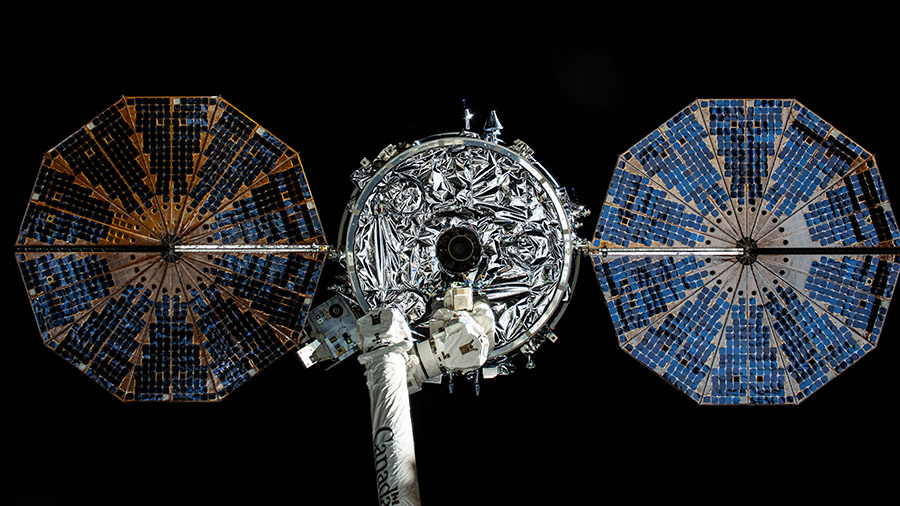
Thursday’s main activities aboard the International Space Station on Thursday were Cygnus cargo craft preparations and microgravity science. Amidst the mission and research duties, the two crews living and working aboard the orbital outpost also kept up standard household duties and plumbing tasks.
Northrop Grumman’s Cygnus resupply ship is targeted to launch atop a SpaceX Falcon 9 rocket at 11:29 a.m. EDT on Saturday from Space Launch Complex 40 at Cape Canaveral Space Force Station in Florida. Cygnus is planned to take a day-and-a-half trip around Earth before arriving at the space station for its robotic capture at 6 a.m. on Monday.
NASA Flight Engineers Matthew Dominick and Jeanette Epps practiced Cygnus capture techniques on Thursday using the Canadarm2 robotic arm and guiding it toward a grapple fixture on the Permanent Multipurpose Module (PMM). Dominick will be commanding the Canadarm2 to capture Cygnus early Monday while Epps will back him up and monitor Cygnus’ approach and rendezvous.
Epps began her day with blood and saliva sample collection work, processing the specimens for analysis, then stowing the samples in a science freezer and the Kubik research incubator for future retrieval. Dominick set up a notebook computer and connected it to the advanced resistive exercise device for an experiment that measures how muscles and bones are impacted when working out in space.
Tracy C. Dyson and Mike Barratt, both Expedition 71 Flight Engineers, worked on science maintenance and housekeeping tasks throughout the day. Dyson swapped samples and components inside a flame research device that safely studies how materials burn in weightlessness aboard the Kibo laboratory module. Barratt measured the airflow in the Harmony module’s port side crew quarters to ensure the upkeep of ventilation systems and maintain crew health.
NASA astronauts Butch Wilmore and Suni Williams, Commander and Pilot for Boeing’s Crew Flight Test, spent their day on a variety of household tasks. Wilmore first organized food stowed in the Unity module and the PMM then installed a light meter on the Veggie botany research facility. Williams deep cleaned Unity temporarily uninstalling racks and hardware to access and wipe down hard to reach areas with disinfectant.
Station Commander Oleg Kononenko from Roscosmos began his day checking laptop computers before spending the afternoon photographing crew activities and inspecting windows in the Zvezda service module. Flight Engineer Nikolai Chub was back on physics research Thursday as he studied how fluids are affected by magnetic and electrical fields in space. Flight Engineer Alexander Grebenkin worked throughout the day an orbital plumbing and life support tasks in the station’s Roscosmos segment.
Learn more about station activities by following the space station blog, @space_station and @ISS_Research on X, as well as the ISS Facebook and ISS Instagram accounts.
Get weekly video highlights at: https://roundupreads.jsc.nasa.gov/videoupdate/
Get the latest from NASA delivered every week. Subscribe here: www.nasa.gov/subscribe
